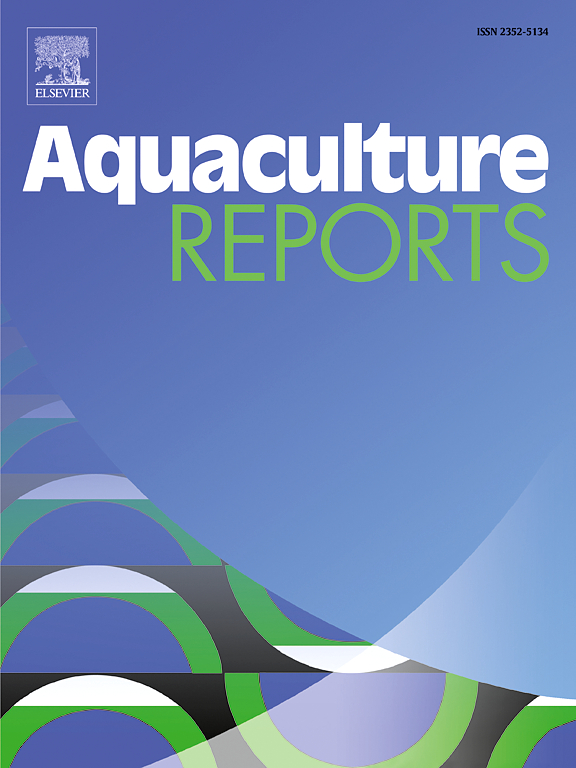Domestication may affect spawning performance of F1 pikeperch (Sander lucioperca) during consecutive captive reproduction
IF 3.2
2区 农林科学
Q1 FISHERIES
引用次数: 0
Abstract
The aim of this study was to examine the possibility of consecutive spawning of the first domesticated generation (F1) of pikeperch (Sander lucioperca). Fingerlings of pikeperch, produced in controlled reproduction from wild fish, were grown in captive conditions to sexual maturity for 2 years in concrete tanks. Histological observations revealed that the fish were in the peripheral nucleoli stage at 20-month old and ready to spawn at 2-year-old (129.3 ± 12.9 g) with an increase in water temperature. They were injected with 200 IU of human chorionic gonadotropin per kilogram of body weight and put in to the rectangular concrete tanks with an artificial bed for each pair to spawn. The results throughout the 4 years of propagation of domesticated pikeperch showed the readiness of fish in response to spawning induction and the nest quality (surface of the nest covered by the eggs) was fairly affected by the age of fish, while no significant changes were found in fertilization and hatching rates among different ages. In conclusion, this study demonstrated that domesticated pikeperch can be spawned at 2-year old and still capable of producing eggs for further years in captive conditions. This can help the fish farmers to distinguish the best age classes of domesticated pikeperch to achieve higher quantity and quality of controlled reproduction and offspring production.
求助全文
约1分钟内获得全文
求助全文
来源期刊

Aquaculture Reports
Agricultural and Biological Sciences-Animal Science and Zoology
CiteScore
5.90
自引率
8.10%
发文量
469
审稿时长
77 days
期刊介绍:
Aquaculture Reports will publish original research papers and reviews documenting outstanding science with a regional context and focus, answering the need for high quality information on novel species, systems and regions in emerging areas of aquaculture research and development, such as integrated multi-trophic aquaculture, urban aquaculture, ornamental, unfed aquaculture, offshore aquaculture and others. Papers having industry research as priority and encompassing product development research or current industry practice are encouraged.
 求助内容:
求助内容: 应助结果提醒方式:
应助结果提醒方式:


